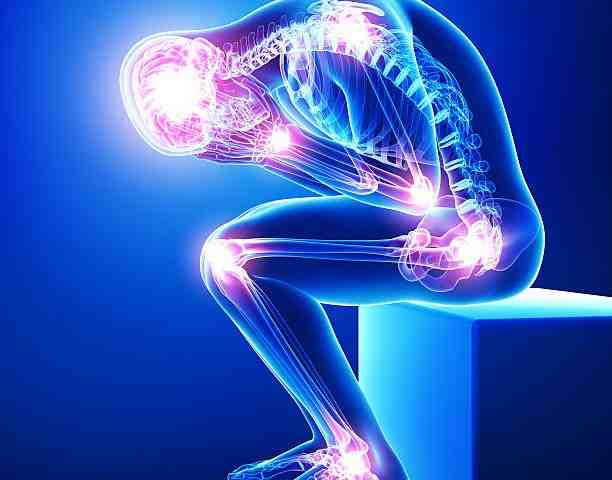10 Unique Joints of the Body

Sorrow in Silence
November 21, 2023
Understanding White vs Pink vs Brown Noise
December 2, 202310 Unique Joints of the Body
The human body is an amazing mass of complexity. Its ability to move and perform complex tasks relies on a unique variety of joints. Joints are the connections between bones, providing the necessary flexibility and range of motion. While everyone is familiar with common joints like the knees and elbows, there are many unique joints that contribute to the body’s remarkable mobility. Dr. Aaron Workman, a chiropractor at one of the highest rated auto injury care programs in Lexington, explores 10 unique joints, each with its own specialized function.
- Atlantoaxial Joint:
This joint is situated between the first and second vertebrae of the neck, known as the atlas and axis, respectively. If you give the thumbs up expression that is similar to what the axis looks like, and if you put a circle around your thumb that is the atlas. This allows for the pivotal movement of the head, such as when shaking it in a “no” motion. The atlas rotates around the axis, providing essential flexibility for movements like turning the head.
- Sternocostal Joints:
These joints connect the sternum to the cartilage of the ribs. They permit small movements during breathing, coughing, sneezing, contributing to the expansion and contraction of the chest cavity. The flexibility of these joints is crucial for respiratory functions.
- Intervertebral Joints:
Found between the vertebrae of the spine, intervertebral joints are cartilaginous joints that permit small movements between vertebrae while providing stability. These joints contribute to the spine’s flexibility and absorb shock during activities like walking and running.
- Carpometacarpal Joint of the Thumb:
The thumb is a remarkable digit with a unique joint that enables opposition – the ability to touch the tips of the other fingers. You may have heard it called “opposable thumbs” and is one of the many things that make us unique. This joint allows for precision grips and intricate hand movements.
- Glenohumeral Joint:
Commonly known as the shoulder joint, the glenohumeral joint is a ball-and-socket joint (also found in the hip) that provides a wide range of motion for the arm. This joint allows for actions like lifting, rotating, and reaching in various directions.
- Temporomandibular Joint (TMJ):
The TMJ connects the jawbone to the skull and facilitates the complex movements required for activities like chewing, talking, and yawning. It is a unique joint we rarely think about until it is damaged. If damaged, you will quickly learn about TMJ syndrome and how much it can affect the head and neck.
- Cuboid-Metatarsal Joint:
Situated in the foot, this joint connects the cuboid bone to the metatarsal (toe) bones. It contributes to the foot’s flexibility and aids in movements like inversion and eversion, essential for maintaining balance and adapting to various surfaces.
- Acromioclavicular Joint:
Located at the top of the shoulder, the acromioclavicular (AC) joint connects the acromion process of the scapula to the clavicle (collarbone). This joint plays a role in shoulder movements and is important for maintaining stability in the shoulder region.
- Talocrural Joint:
Also known as the ankle joint, the talocrural joint connects the tibia, fibula, and talus bone of the foot. It allows for pointing of the foot up and down and is important for essential activities like walking and running.
- Proximal Radioulnar Joint:
This joint allows for rotation between the radius and ulna bones in the forearm. Imagine the movement that takes place when you twist the arm to open a doorknob or use a screwdriver. This palm up and palm down rotation is accomplished using this particular joint.
Understanding the diversity of joints in the human body highlights the uniqueness of our anatomy. Knowing how these joints function can also help identify problems with particular movements and which joints that may be involved. Maintaining these joints requires each of these joints going through their full range of motion daily.
— This article is written by Aaron Workman, DC, one of the members of Chambers Medical Group’s team of car accident chiropractors who offer a variety of treatments and therapies ranging from diagnostic testing to various soft tissue therapies for car accidents and injuries in Kentucky.
–
.
–
Have you been in a car accident? If you or somebody you know has been in a car accident, be sure that you seek medical attention from a car accident doctor or car accident chiropractor to treat your injuries. Visit Chambers Medical Group to receive world-class medical treatment for your injuries.
Chambers Medical Group has car accident medical clinics in the following locations:
- Car Accident Medical Clinic in Tampa
- Car Accident Medical Clinic in Plant City
- Car Accident Medical Clinic in Brandon
- Car Accident Medical Clinic in Lakeland
- Car Accident Medical Clinic in Sarasota
- Car Accident Medical Clinic in Louisville
- Car Accident Medical Clinic in Lexington
- Car Accident Medical Clinic in Florence




